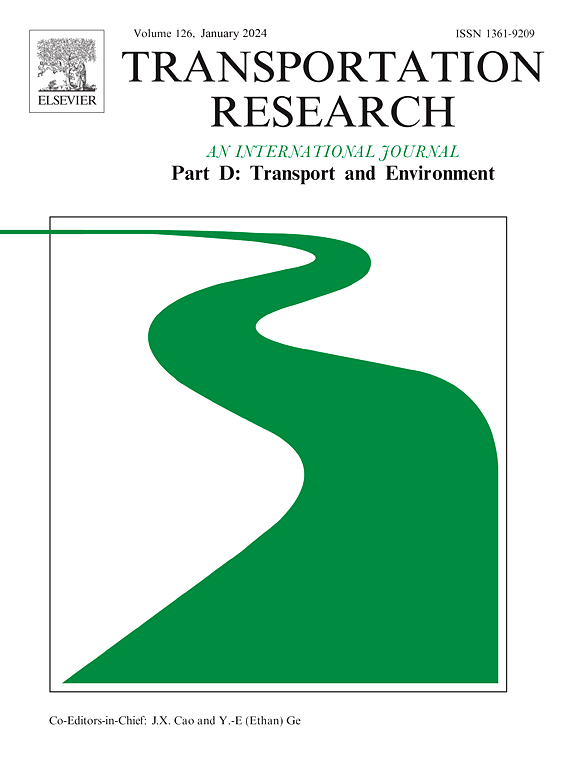Collaborative distribution network design for sustainable parcel deliveries: A strategic modelling approach
IF 7.3
1区 工程技术
Q1 ENVIRONMENTAL STUDIES
Transportation Research Part D-transport and Environment
Pub Date : 2025-02-21
DOI:10.1016/j.trd.2025.104667
引用次数: 0
Abstract
The rise of e-commerce has increased the demand for B2C transport, posing challenges for urban distribution and its upstream supply networks. Multiple sustainable transport strategies have been proposed to mitigate the effects of freight movement. However, sustainable transport strategies should address the economic, environmental, and social aspects equally. This study aims to evaluate a sustainable distribution strategy based on collaborative network design, integrating last-mile strategic modelling using the continuous multi-scale approach (CMA) with network design models. In the case study on parcel deliveries in Belgium, the collaborative network design strategy minimizes operational and external costs of transport, addressing economic, social and environmental aspects. The results show that, in a scenario where two shaded hubs are implemented, operational and external transport costs can be reduced by up to 20% compared to the current situation where all carriers operate individually. Similarly, carbon emissions are reduced by 25% in the same scenario.
求助全文
约1分钟内获得全文
求助全文
来源期刊
CiteScore
14.40
自引率
9.20%
发文量
314
审稿时长
39 days
期刊介绍:
Transportation Research Part D: Transport and Environment focuses on original research exploring the environmental impacts of transportation, policy responses to these impacts, and their implications for transportation system design, planning, and management. The journal comprehensively covers the interaction between transportation and the environment, ranging from local effects on specific geographical areas to global implications such as natural resource depletion and atmospheric pollution.
We welcome research papers across all transportation modes, including maritime, air, and land transportation, assessing their environmental impacts broadly. Papers addressing both mobile aspects and transportation infrastructure are considered. The journal prioritizes empirical findings and policy responses of regulatory, planning, technical, or fiscal nature. Articles are policy-driven, accessible, and applicable to readers from diverse disciplines, emphasizing relevance and practicality. We encourage interdisciplinary submissions and welcome contributions from economically developing and advanced countries alike, reflecting our international orientation.

 求助内容:
求助内容: 应助结果提醒方式:
应助结果提醒方式:


